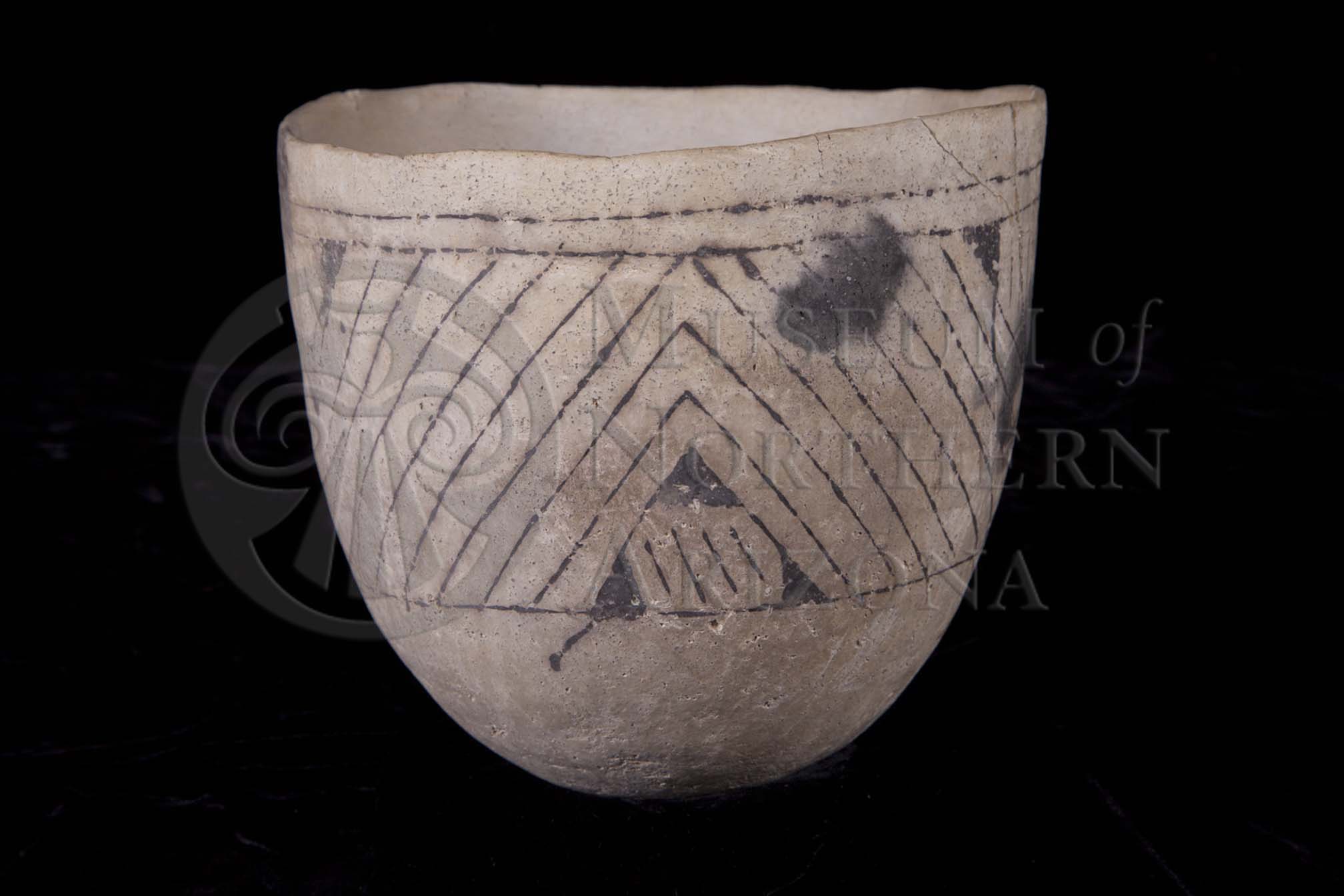
Kana’a Black-on-white deep bowl from the Museum of Northern Arizona collections. Click the image to open the Kana’a Black-on-white gallery.
With the exception of Lino Black-on-gray, a Tusayan Gray Ware that some ceramicists include with Tusayan White Ware, Kana’a Black-on-white is the earliest type in the Tusayan White Ware series, and is found in the greater part of northeastern Arizona between the Little Colorado River and the San Juan River.
Archaeological Culture: Ancestral Puebloan, Kayenta
Date Range: Kayenta Heartland: A.D. 800-1050 (Christenson 1994), Flagstaff Region: A.D. 825-1025 (per Christian Downum, Northern Arizona University).
Construction: By coiling.
Firing: In a reducing atmosphere.
Core Color: Light gray.
Carbon Streak: Common.
Temper: Fairly abundant quartz sand; sometimes conspicuous on undecorated surfaces.
Surface Finish: Bowl exteriors scraped, scraping marks usually visible; interior bowls and exterior jars polished, somewhat bumpy; both surfaces bowls and exterior jar surfaces rarely slipped (white); slipped surfaces frequently coarsely crazed.
Surface Color: Bluish white, creamy white, or white.
Forms: Bowls, jars, seed jars, pitchers.
Vessel Thickness: 2.7 to 5.9 mm (bowls); 2.1 to 6.2 mm (jars).
Decoration:
- Paint: Black, usually fairly dense, often watery, sometimes with brownish or purplish tint.
- Pigments: Carbon.
- Design: Bowl interiors and jar exteriors only; fine straight lines, sometimes singly, more often parallel series of 3 to 10 lines, about 4 to 10 mm apart; lines almost always carry over slightly at junctions; small solid triangles, either isosceles or elongated, sometimes with hooks; pendent dots and ticks or pinnate lines frequent; characterized by crude brushwork.
Comparisons: Lino Black-on-gray, never slipped or polished; gritty surface, gray color, design cruder. Red Mesa, Kiatuthlanna, and Dead River Black-on-white all have mineral paint but with similar designs.
Other Names: Slab-house Black-on-white; Pre-Pueblo Black-on-white; Pueblo I Black-on-white; 1st Tusayan; Western Pueblo I Black-on-white.
Compiled from the following sources:
Christenson, Andrew (1994) A Test of Mean Ceramic Dating Using Well-Dated Kayenta-Anasazi Sites. Kiva 59(3):297-317.
Colton, Harold S., and Lyndon L. Hargrave. (1937) Handbook of Northern Arizona Pottery Wares. Museum of Northern Arizona Bulletin 11, Flagstaff, Arizona.
Compiled by:
April Peters, Northern Arizona University Anthropology Laboratories.
